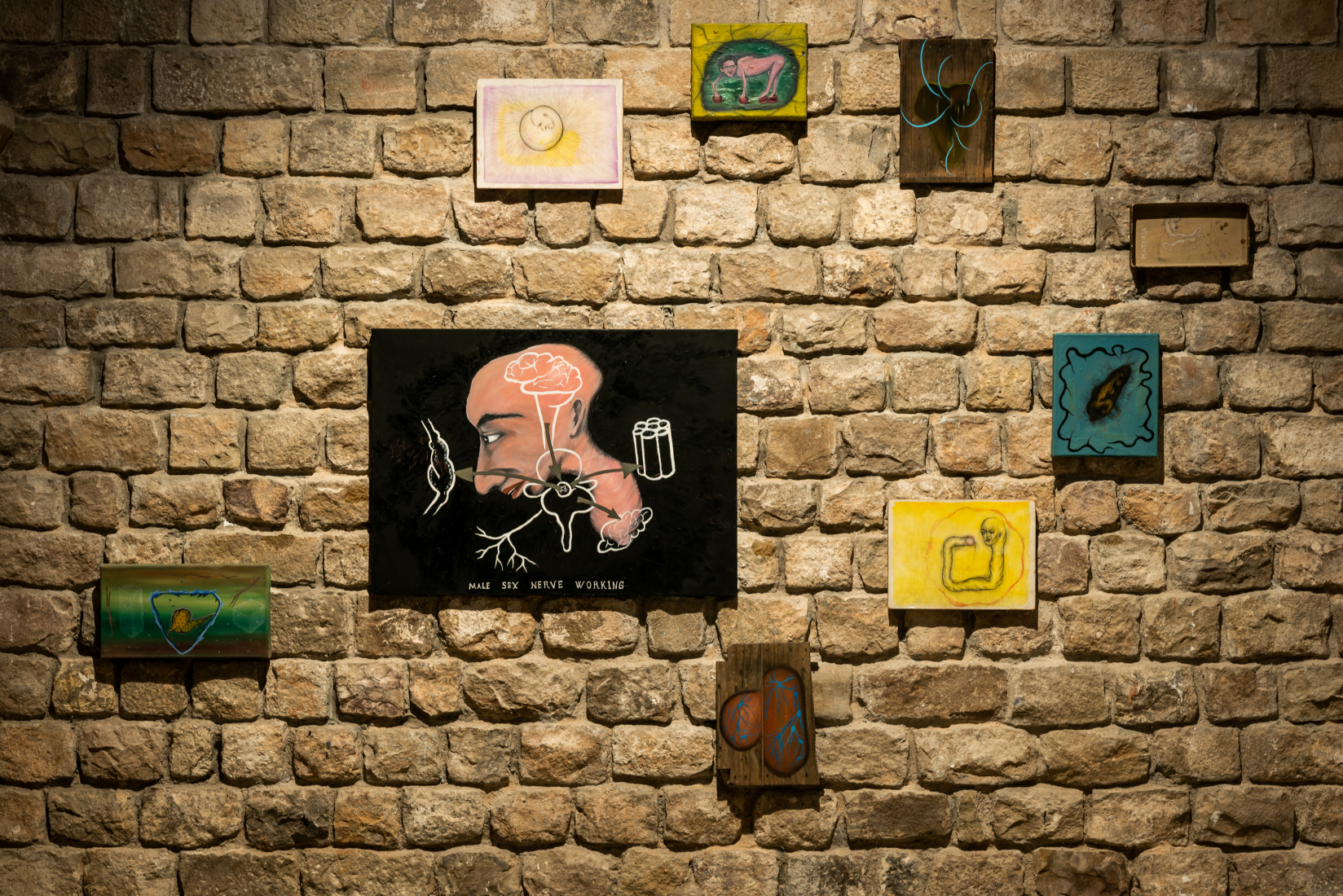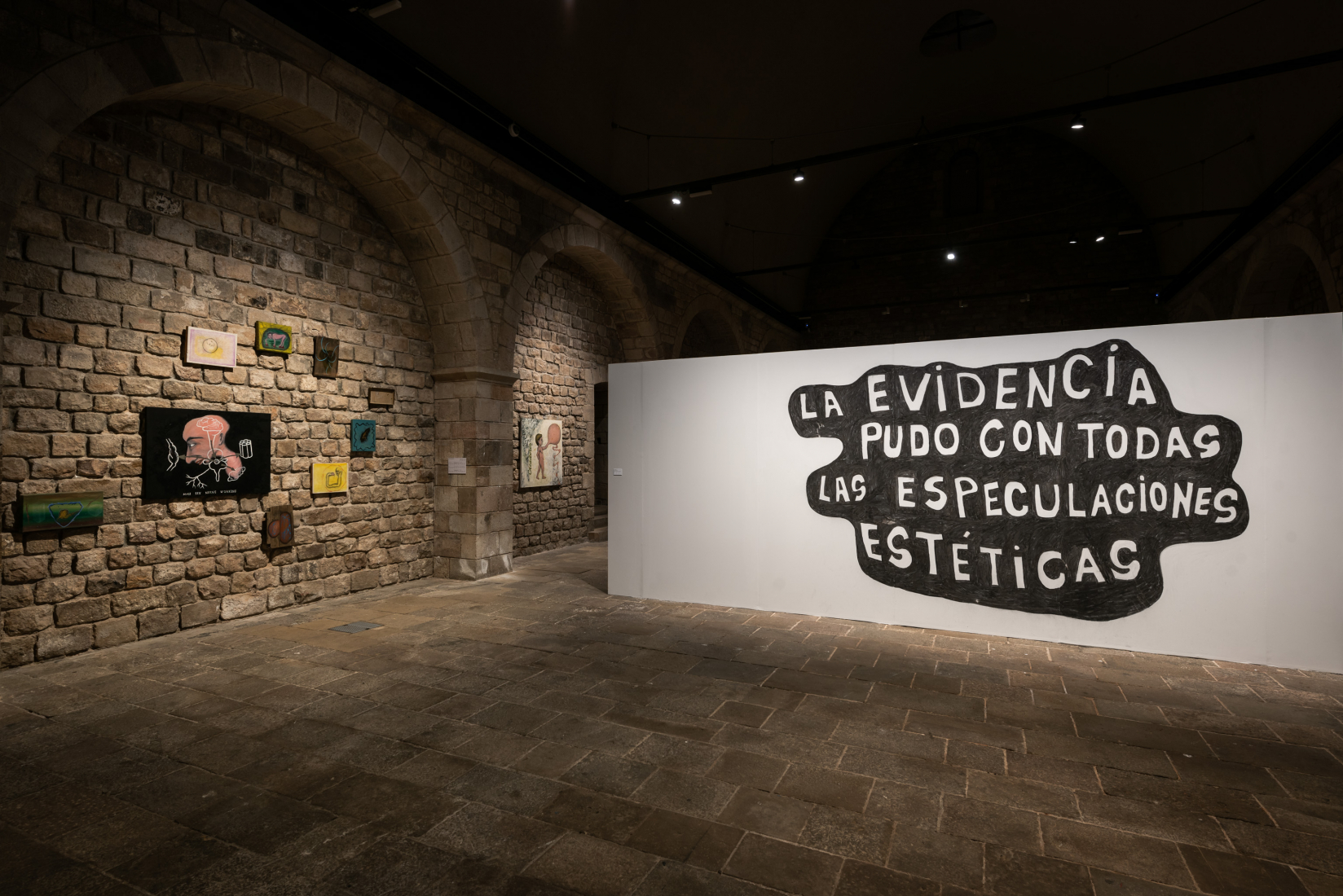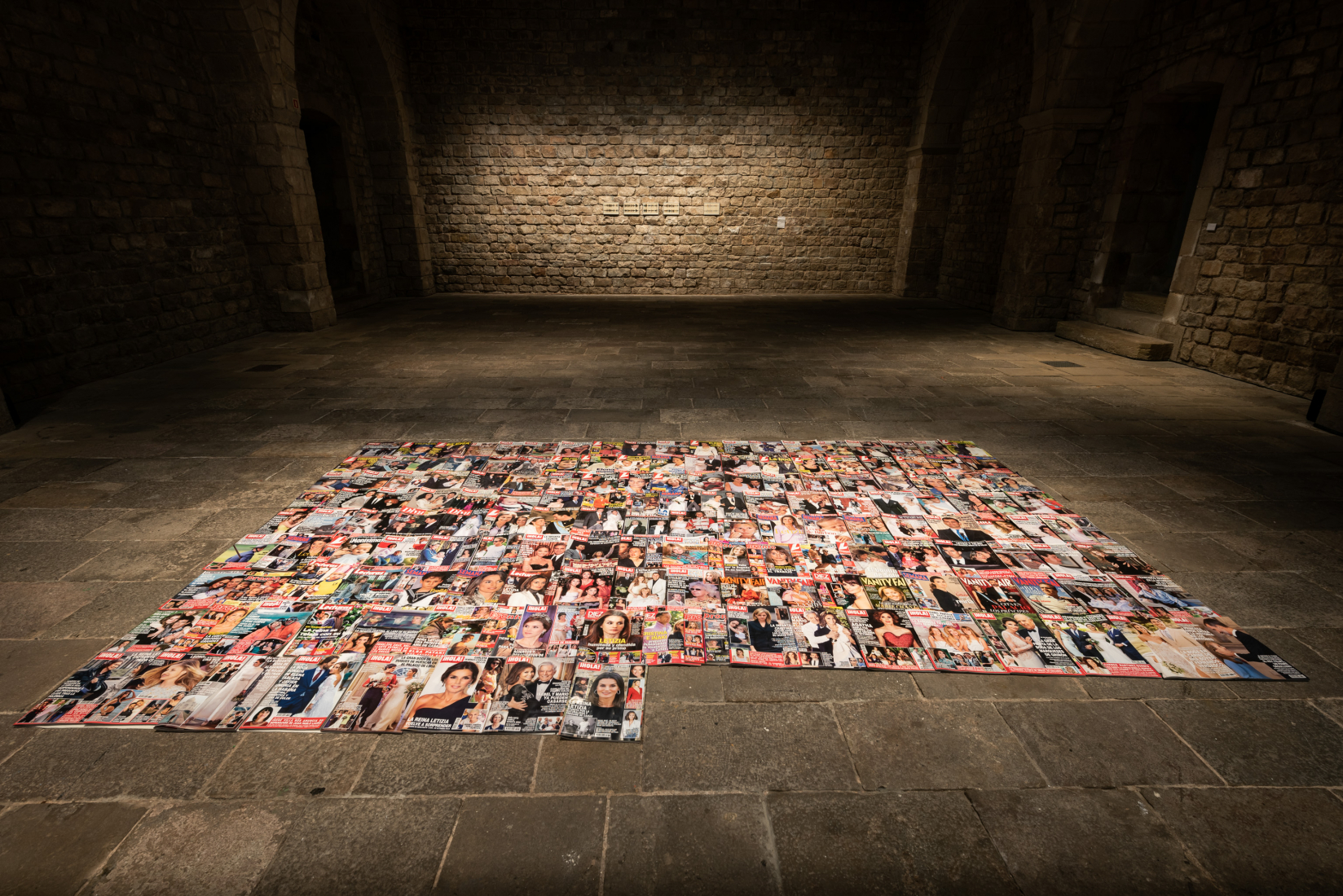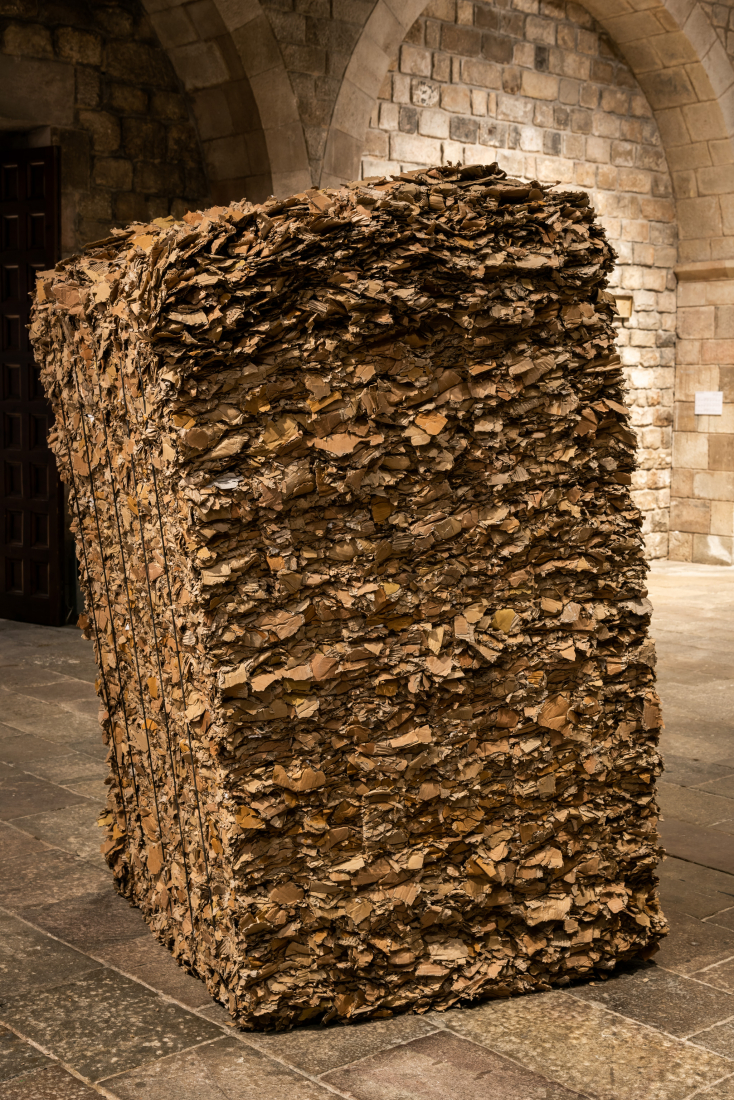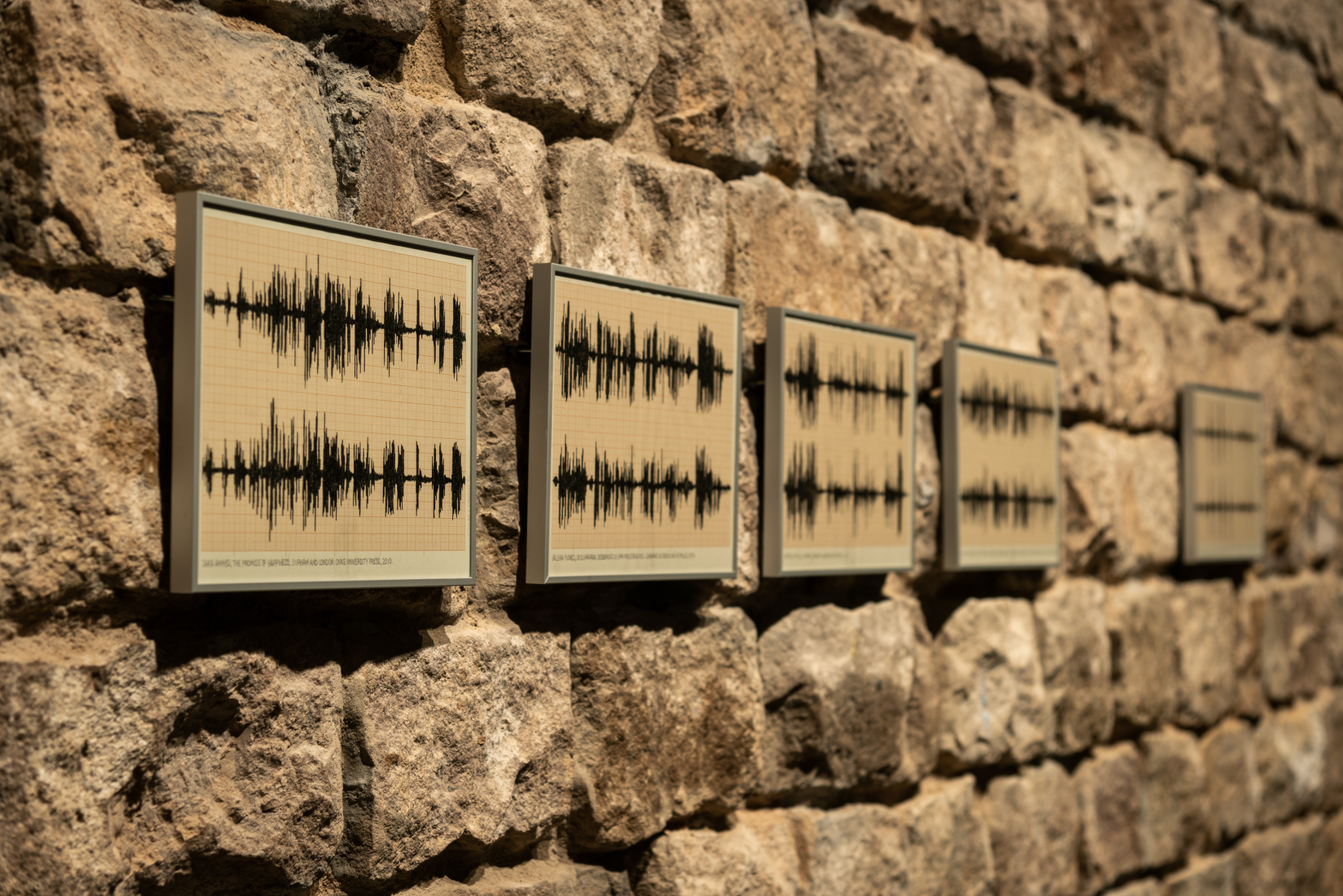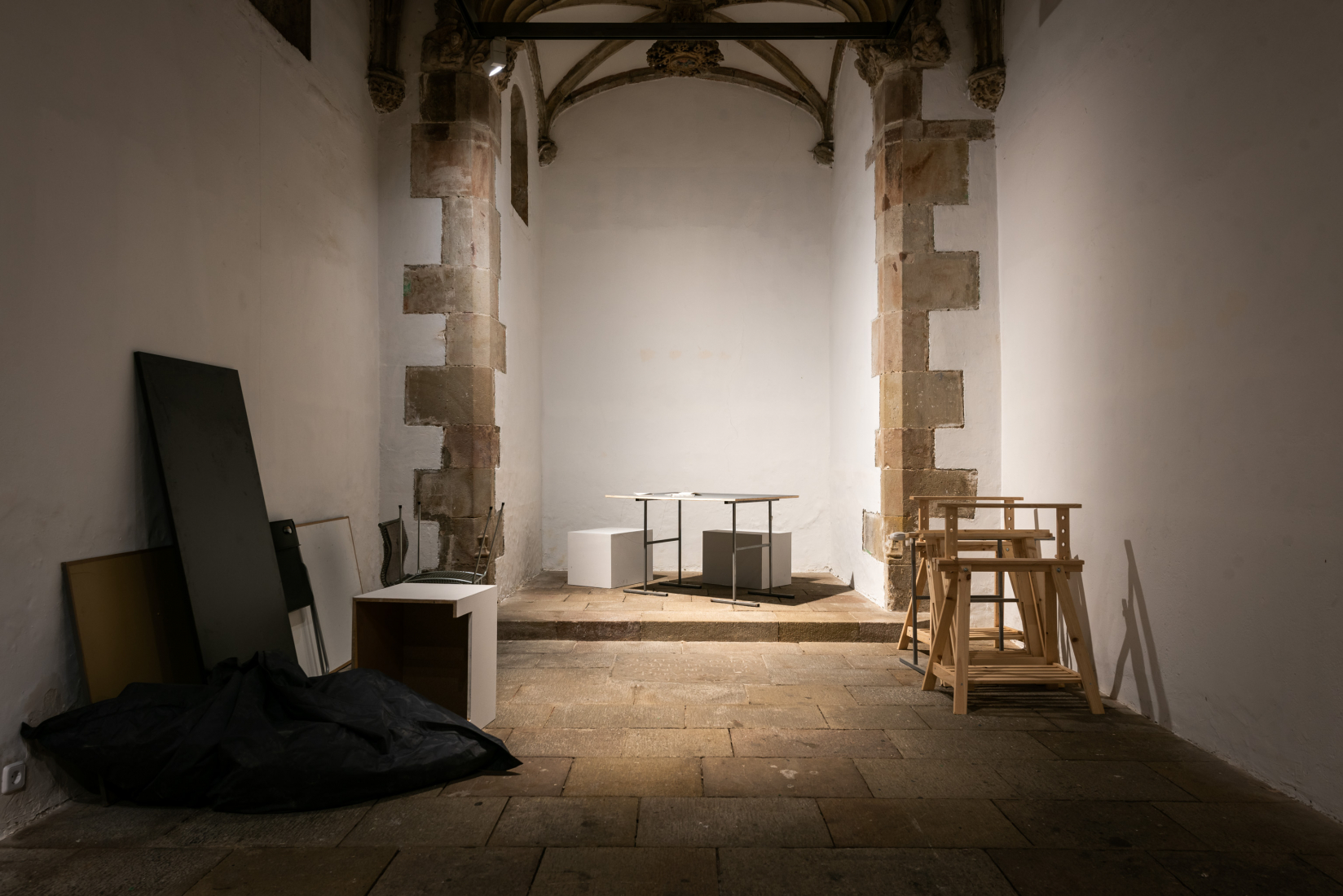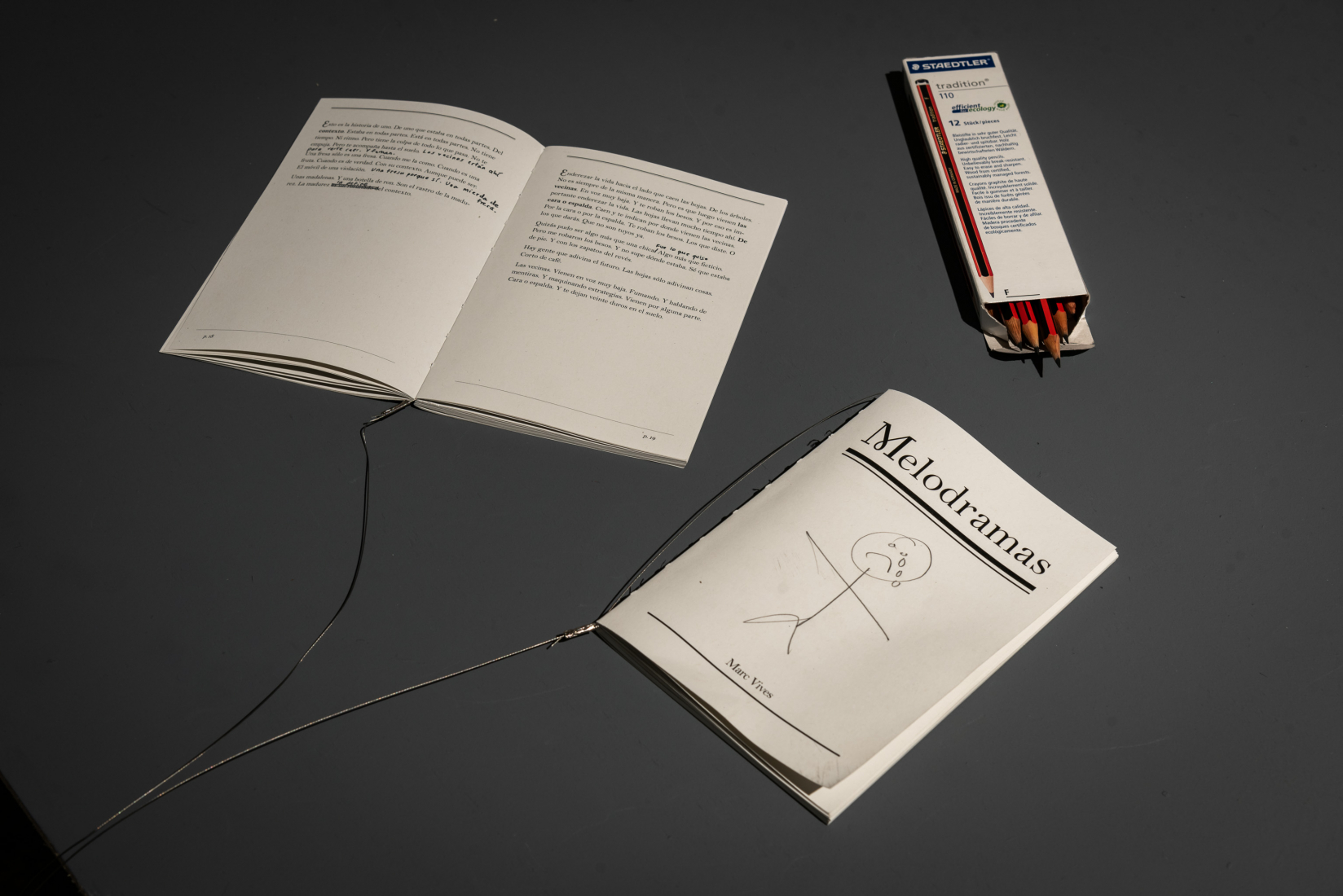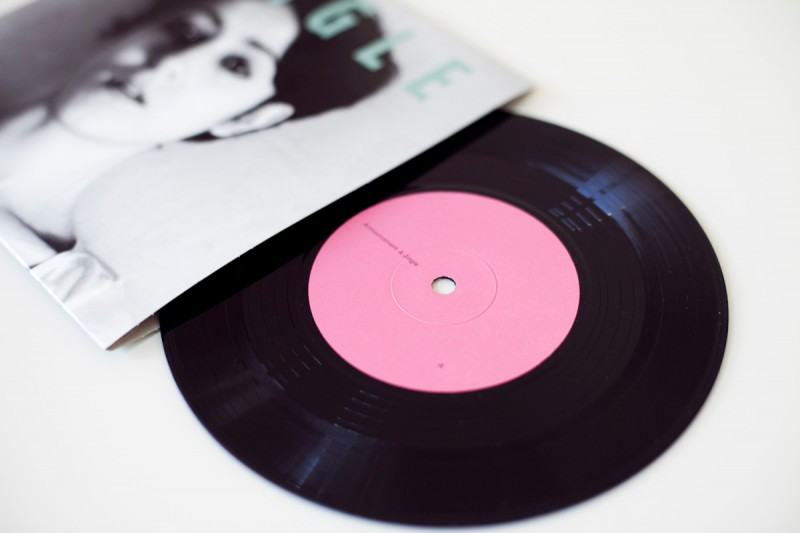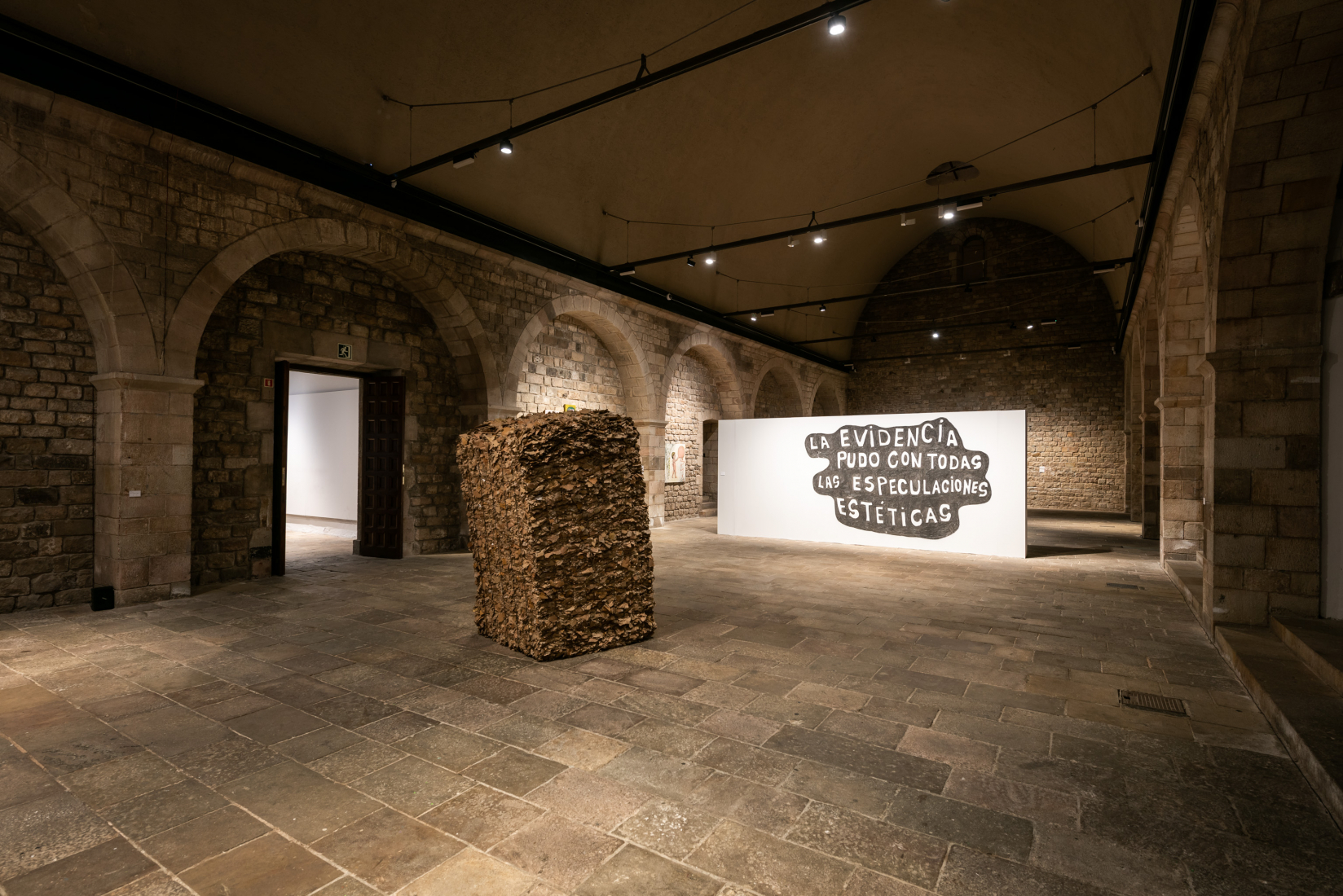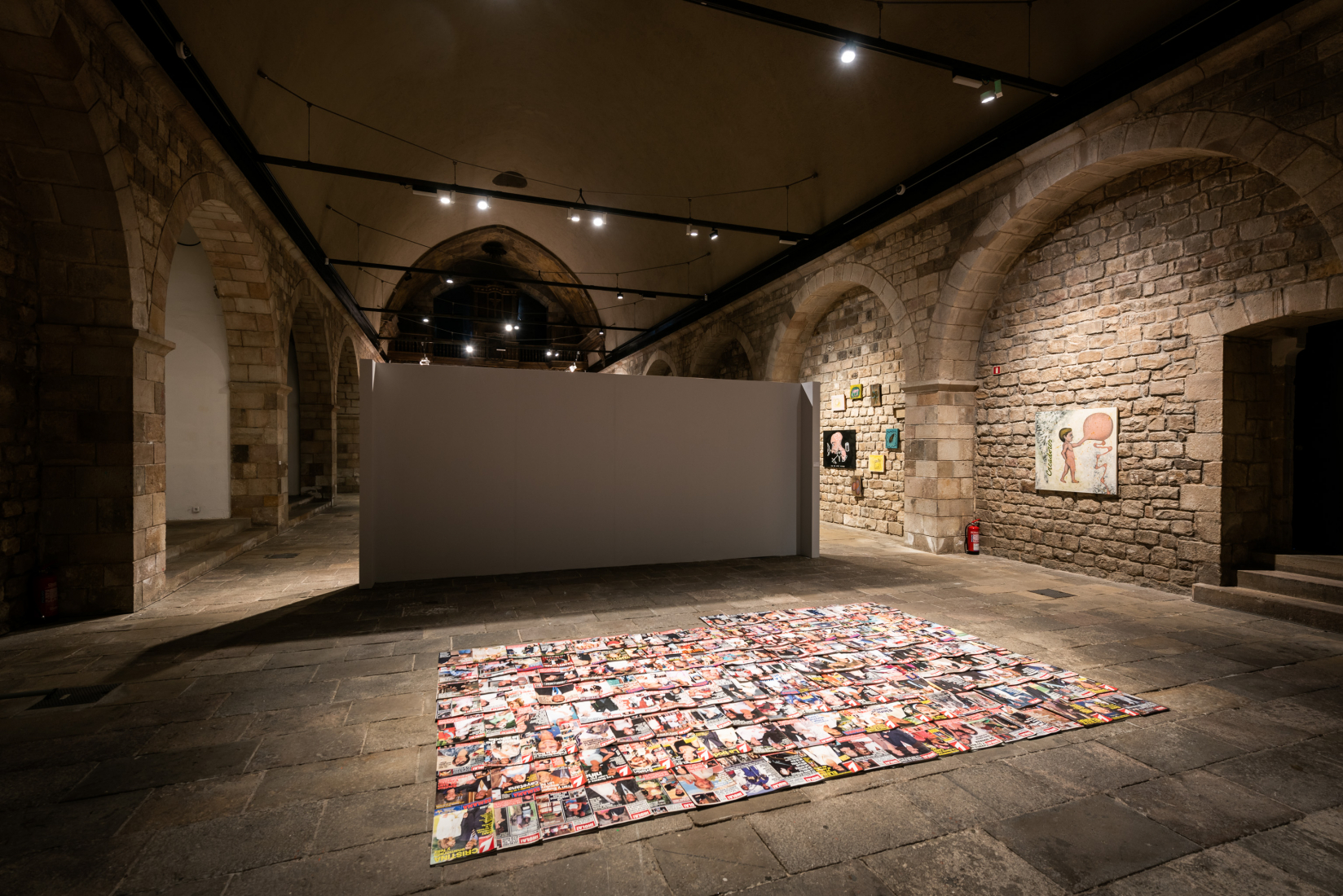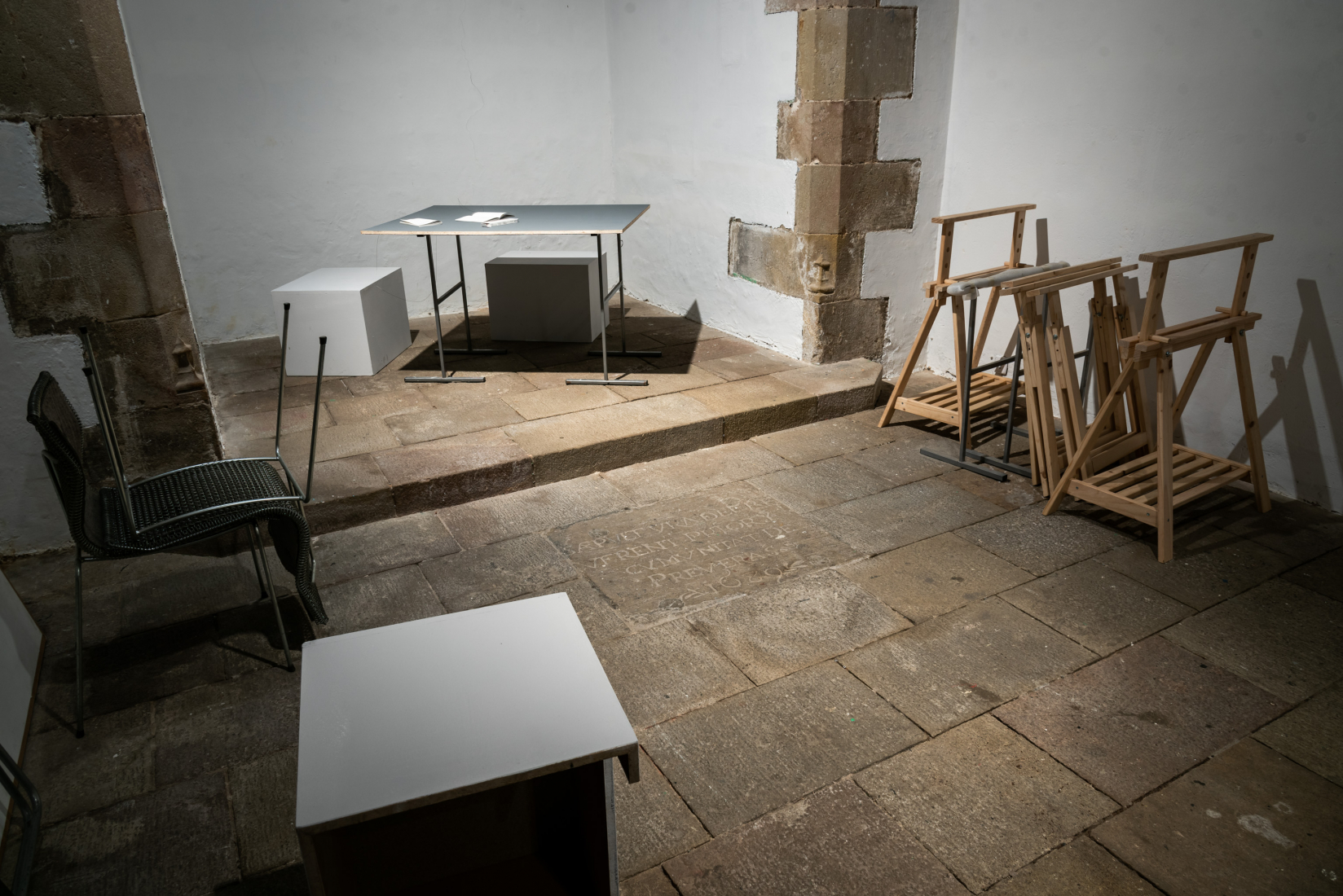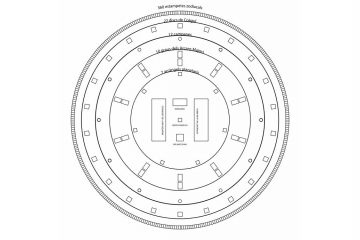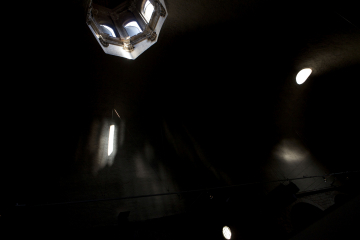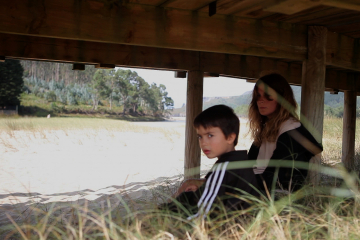Les escenes. 25 Years after. Scene 1
Escena 1
Lucía Egaña / Laia Estruch / Gustavo Marrone / Julia Spínola / Marc Vives
Les escenes (The Scenes) starts at a crossroads with several possible options for getting underway, including the difficulty of getting started. During the process of thinking about how to begin, the commencement itself became a starting scenario. This is not a single but a multiple beginning. In the best case, it is expected that this first scene will initiate dramaturgical lines that will continue throughout the following scenes. Though some perhaps will not, quickly evaporating to make way for others.
For starters, the beginning emerged from the historical background of the place. Contemporary art exhibitions had been organised before, but it was not until 1994 that La Capella launched its regular visual arts programme. Gustavo Marrone (Buenos Aires, 1962) was in the first exhibition. Along with the historical and objective launch, Marrone’s works usher onto the stage one of the chief subjectivities of work in art: cosmogonic thinking, the power of the imagination itself. The temporal arc of the exhibition stretches across his work from a 1990s selection of paintings and drawings to a recent proposal that includes old magazines and a magnified confession: “the evidence beat all aesthetic speculations”. As a premonition, this work seems to warn us that the evident, the contingent, the immediate, and the body and affects vie with the historical and the speculative when it comes to exploring, displaying and connecting artistic practices. Carnality and textuality combined.
For starters, a beginning could be taken as an occasion for a self-introduction to an audience: the artist’s statement as a declaration of intent and as a letter of introduction; a prior moment, an expectation, an ability to seduce even before the work itself is shown. A strength for those who know how to do it; doom for those who cannot find the formula. Jingle (2011) by Laia Estruch (Barcelona, 1981) is a musical version of this artistic declaration that seeks, assays and repeats itself, sustaining a preliminary. Singing to oneself as a parodic exercise of resistance to the very identity of the artist.
For starters, a beginning is the moment to establish the rules for a storytelling, in our case, the moment to provide an understanding of the nature of this exhibition and of the logic that will guide it: the way in which the narrative is going to be constructed, with the coming and going of works, with their setting into motion. Melodramas is a book written by Marc Vives (Barcelona, 1979) in 1998 while he was still studying fine art. It is a novel that arose from a landscape composition assignment. It is, then, a written piece that translates a composition of place, a map, a somewhat cartographic musical score. The text reproduces (melodramatic) promenades and knots between various points in this initial landscape that stand for unlikely characters, situations, metaphors or sets. The writing tests intertwinings between them that are difficult to stabilise, and the permutations in the order of these elements produce a sensation of constant narrative morphing. The text occasionally admits its operational principle: “This, yes; this, no. With this, you’ll be able to do this… I don’t have to now… of course! There’s no more. What’s in contact is what matters.” The relationship between writing and the original physical stage, as well its frenetic choreography and rejection of the stable, says something about the way that what begins here develops.
Melodramas also points to the complex and intense project of devoting a life to art. Not just by being an artist but through multiple identities that include exercises in (self)elimination in various roles and collectives. Les escenes (The Scenes) has sought to pay attention to the ways of making or feeding a context beyond the – albeit always artistic – production and agency of the artist.
For starters, the exhibition is regarded not as a fixed portrait but as a sequence of intense moments. During his performance on 5 February, Marc O’Callaghan (Barcelona, 1988) will use Tarot Arcana to revisit and reformulate a decade of work in the manner of a ritual invocation. During a recent burglary at Coagularium – O’Callaghan’s studio – much of the musical archive of Coàgul, one of his many projects, was taken. Based on this unfortunate personal experience, O’Callaghan proposes to coagulate live an entire decade of sound, somatic and performative experimentation. In this he will be guided by a collection of bells that are of magical value in the untranslatable universe of Coàgul.
For starters, another opening would be the drawings, which are reading notes, by Lucía Egaña Rojas (Münster, Chile, 1979). Her Pajas mentales (Mind Wanks) series is a notebook containing a transcription, not of the discursive content of a book, but the physical and carnal response to it. “There are authors who arouse me, writings that excite me”, says the artist in the text that accompanies her drawings, laying the emphasis on the impetus aspect of all research: “Reading is also done with the hand, with the vulva”. A declaration of intent in favour of an epistemology made flesh that echoes Marrone by distancing itself from the purely speculative and which underscores the libidinous foundation that also underpins Les escenes (The Scenes). In addition, Egaña is another of those artists who adopt hybrid positions encompassing the artist, the activist and the activator of contexts and formats and who have shaped or have distorted Barcelona, in the best sense of the word.
For starters, another way of beginning points to the idea of the artwork and to its physical nature in an exhibition room. In Fardo (Bundle, 2018) by Julia Spínola (Madrid, 1979), materiality and its processes invite us to appreciate the art object on the basis of its own autonomy. A certain autonomy in which the inert – in this case, an enormous bundle of cardboard – seems to free itself of the expectations of it and is instead reduced to pure speculative essence. A process of elimination that also affects matter. Forgetfulness understood as an exercise in balance: the compression that derives from accumulation.
The bundle also serves as an image for the quantity of layers and density of elements that make up the mass of twenty-five years of activity. It prompts us to consider that mounting an anniversary exhibition cannot consist of recounting a period of history but of cutting through it to reveal possible cross sections. Possible scenarios, possible mélanges between strata, even incorporating elements that were never here.
For starters, one beginning, six commencements.
Curatorial team: David Armengol, Sonia Fernández Pan, Eloy Fernández Porta, Sabel Gavaldón and Anna Manubens.



